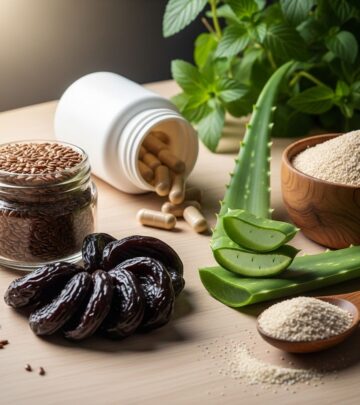21 Effective Home Remedies for Toothache Pain Relief
Discover simple, fast-acting home remedies to ease toothache pain and maintain oral comfort until professional dental care is available.

Toothache pain can strike at any time, causing intense discomfort and disrupting daily life. While seeing a dentist is essential for lasting relief and to address underlying issues, a range of home remedies can temporarily alleviate pain and soothe irritated gums. This comprehensive guide explores 21 reliable home remedies for toothache pain relief, complete with practical instructions, tips, and safety considerations.
How to Use These Home Remedies Safely
- Apply remedies directly to the affected tooth and surrounding gums, unless otherwise stated.
- For rinses and liquids, thoroughly swish around the area, then spit out. Avoid swallowing.
- Chew or place solid ingredients as directed, holding them gently in place near the source of pain.
- Repeat as needed, but remember these solutions are temporary and not substitutes for dental care.
Home Remedies for Toothache: 21 Methods to Try
Salt Water Rinse
Saltwater is a natural disinfectant that helps reduce inflammation and removes debris from between teeth. Dissolve a heaping tablespoon of salt in a glass of warm water, swirl thoroughly around your mouth, focusing on the affected area, then spit out. Repeat as needed throughout the day. This remedy soothes pain, supports gum healing, and prevents infection.
Hydrogen Peroxide Rinse
Hydrogen peroxide (3%) helps to kill bacteria, alleviate discomfort, and reduce plaque. Swish a small amount (can dilute with water for taste) for 30 seconds, then spit out and rinse your mouth with clean water. Never swallow peroxide.
Alcohol Rinse
Alcohol found in whiskey, vodka, or mouthwashes can provide temporary numbing. Swish a small amount around the sore tooth, then spit. This numbing effect is short-lived but may offer temporary comfort.
Vanilla Extract
Soak a cotton ball in vanilla extract (which contains alcohol and antioxidants) and hold it gently on the affected tooth for a few minutes. Substitute with almond, peppermint, or lemon extract if desired.
Tea Tree Oil
Add a drop or two of tea tree oil onto a cotton swab and apply it to the tooth. Alternatively, dilute several drops in a glass of warm water and use as a rinse. Always avoid swallowing. Tea tree oil offers antimicrobial properties.
Oil of Oregano
Mix 2-3 drops of oregano oil with a bit of olive oil or warm water, soak a cotton ball, and hold it on the sore area. Oregano oil has natural antibiotic and anti-inflammatory benefits.
Apple Cider Vinegar
Soak a cotton ball in apple cider vinegar (ACV) and press it gently to your tooth. ACV’s acidity helps disinfect and can temporarily reduce pain.
Ginger Root
Chew on a small, peeled piece of fresh ginger root or place it directly on the problem area. Its anti-inflammatory compounds ease pain and facilitate healing.
Garlic
Crush a clove of garlic and apply it to the affected region, or mash together with a pinch of salt for extra effect. Garlic’s natural antibacterial and pain-relieving properties make it a highly effective traditional remedy.
Peppermint Leaves or Peppermint Tea Bags
Chew on fresh peppermint leaves or use dried leaves, holding them in place. Alternatively, cool a used peppermint tea bag and gently apply it to the painful spot. Peppermint contains menthol, which has numbing properties to alleviate discomfort.
Potato
Slice or mash raw potato (peeled), mix with a little salt, and place it on the offending tooth. Raw potato draws out fluid and may reduce swelling.
Lime or Lemon
Place a wedge or slice of fresh lime (or lemon) on the sore tooth and bite gently to release its juice. The acidity and vitamin C content help combat infection and reduce pain.
Onion
Cut a fresh piece of onion and hold it near the sore area. Onions have antimicrobial properties and provide pain relief.
Plantain Leaf
Chew up a plantain leaf (fresh, well washed) and hold the mashed material against the painful spot. If chewing is difficult, mash one side of the leaf before applying.
Clove or Clove Oil
Clove oil is rich in eugenol, a natural anesthetic and antiseptic. Dab a small amount of oil on a cotton ball and apply to the affected area. Dilute with olive oil or water as it can be potent. Whole cloves can also be pressed gently onto the aching tooth.
Baking Soda Paste
Mix a little baking soda with water to form a thick paste. Apply it directly onto the sore tooth using a cotton swab. Baking soda’s alkalinity may help combat bacteria and neutralize acids.
Ice Pack or Cold Compress
Wrap ice or a cold pack in a cloth and place it against the outside of your cheek for 15–20 minutes. The cold helps numb the pain and reduce swelling.[10]
Coconut Oil Pulling
Swish a tablespoon of coconut oil in your mouth for up to 20 minutes before spitting out. This ancient cleansing technique helps reduce bacteria and inflammation, offering relief for sore gums and teeth.
Over-the-Counter Analgesics
Use medications such as ibuprofen, acetaminophen, or aspirin to relieve pain. Numbing gels containing benzocaine can be applied to the painful site. Never use benzocaine for infants or children under two years old.
Elevation
When resting or sleeping, prop your head up with extra pillows. Elevation prevents blood from pooling in the head, which could intensify pain.
Rinsing with Mouthwash
Use an alcohol-based mouthwash to disinfect and partially numb the affected tooth and gums, providing quick but temporary relief.
Additional Tips for Toothache Relief
- Avoid very cold, hot, acidic, or hard foods when you have a toothache, as these can trigger or worsen pain.
- Maintain gentle oral hygiene with a soft toothbrush and non-abrasive toothpaste, especially around the sensitive area.
- Don’t use sharp objects to poke at the tooth, as this can increase damage or infection.
- Never use homemade remedies as a substitute for dental care. These treatments are temporary and should not replace professional diagnosis and management.
When to Seek Emergency Dental Help
- If your toothache lasts more than 48 hours or intensifies over time.
- If you experience fever, swelling in the face, gum abscess, difficulty breathing or swallowing, or pus discharge.
- For any toothache following trauma or combined with visible tooth fracture.
- Prompt dental attention is critical to address underlying infections and prevent complications.
Table: Popular Remedies and Their Benefits
| Remedy | Main Benefit | Method of Use |
|---|---|---|
| Saltwater Rinse | Disinfects & reduces swelling | Swish in mouth, spit out |
| Clove Oil | Numbs pain & antiseptic | Apply oil to tooth with cotton |
| Peppermint Tea Bag | Soothes & lightly numbs | Apply warm/cool moist bag |
| Ice Pack | Reduces pain & swelling | Apply to outside cheek |
| Garlic | Antibacterial & analgesic | Crush/apply, chew slowly |
| Vanilla Extract | Numbs & provides antioxidants | Apply with cotton ball |
Frequently Asked Questions (FAQs)
Q: How long do home remedies work for a toothache?
A: Most home remedies provide temporary pain relief for several minutes up to an hour. Reapply as needed, but seek dental care for persistent pain.
Q: Which remedy works fastest?
A: Remedies like clove oil, ice packs, and saltwater rinses typically deliver quick, noticeable effects for acute pain.
Q: Can I use multiple remedies together?
A: Yes, you can combine rinses with topical applications like clove oil or cold compresses for enhanced relief, but do not use remedies you are allergic to or that cause irritation.
Q: Are these remedies suitable for children?
A: Many remedies are safe for children over age 6 under adult supervision, but avoid potent oils (clove, tea tree) and never use benzocaine (numbing gel) for children under 2 years old.
Q: Why is my toothache worse at night?
A: Lying down increases blood flow to the head, which can amplify pain. Elevating your head at night and avoiding trigger foods before bed can help.
Conclusion: Home Remedies as Interim Relief
While these 21 home remedies can effectively diminish toothache pain and provide relief in urgent situations, they are not substitutes for comprehensive dental evaluation and care. If symptoms persist, worsen, or are accompanied by systemic signs like fever or swelling, visit a dental professional as soon as possible.
References
- https://survivallife.com/21-home-remedies-for-a-toothache/
- https://www.ashevilledental.com/can-natural-remedies-relieve-tooth-pain/
- https://www.healthline.com/health/how-to-get-rid-of-toothache-at-night
- https://www.the247dentist.com/dental-health-advice/foods-to-avoid-if-you-have-a-toothache/
- https://pmc.ncbi.nlm.nih.gov/articles/PMC6721409/
- https://www.towncaredental.com/blog/the-survival-guide-for-dental-emergencies
- https://www.healthline.com/health/video/home-remedies-for-toothache
- https://www.healthline.com/health/dental-and-oral-health/emergency-toothache-relief
- https://www.colgate.com/en-us/oral-health/cavities/four-homemade-toothache-remedies
- https://www.medicalnewstoday.com/articles/320315
Read full bio of Sneha Tete












